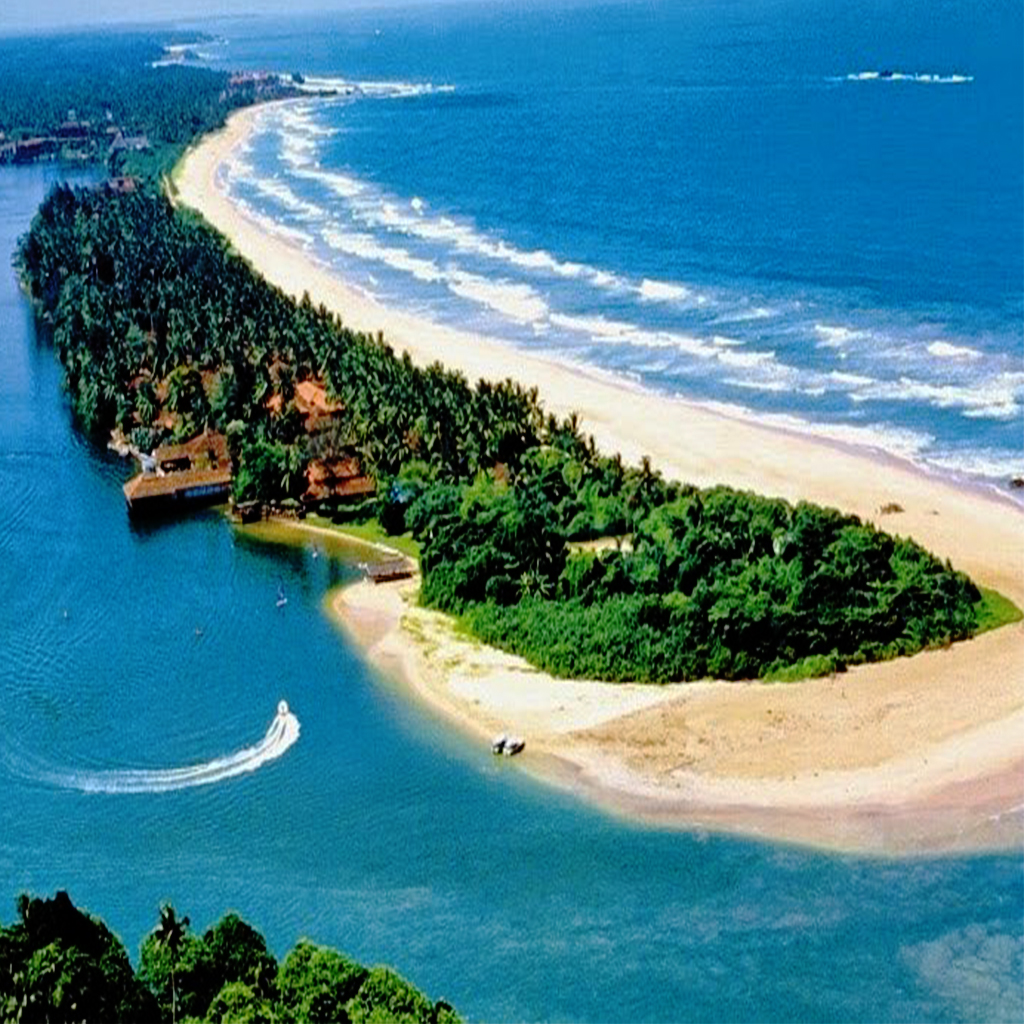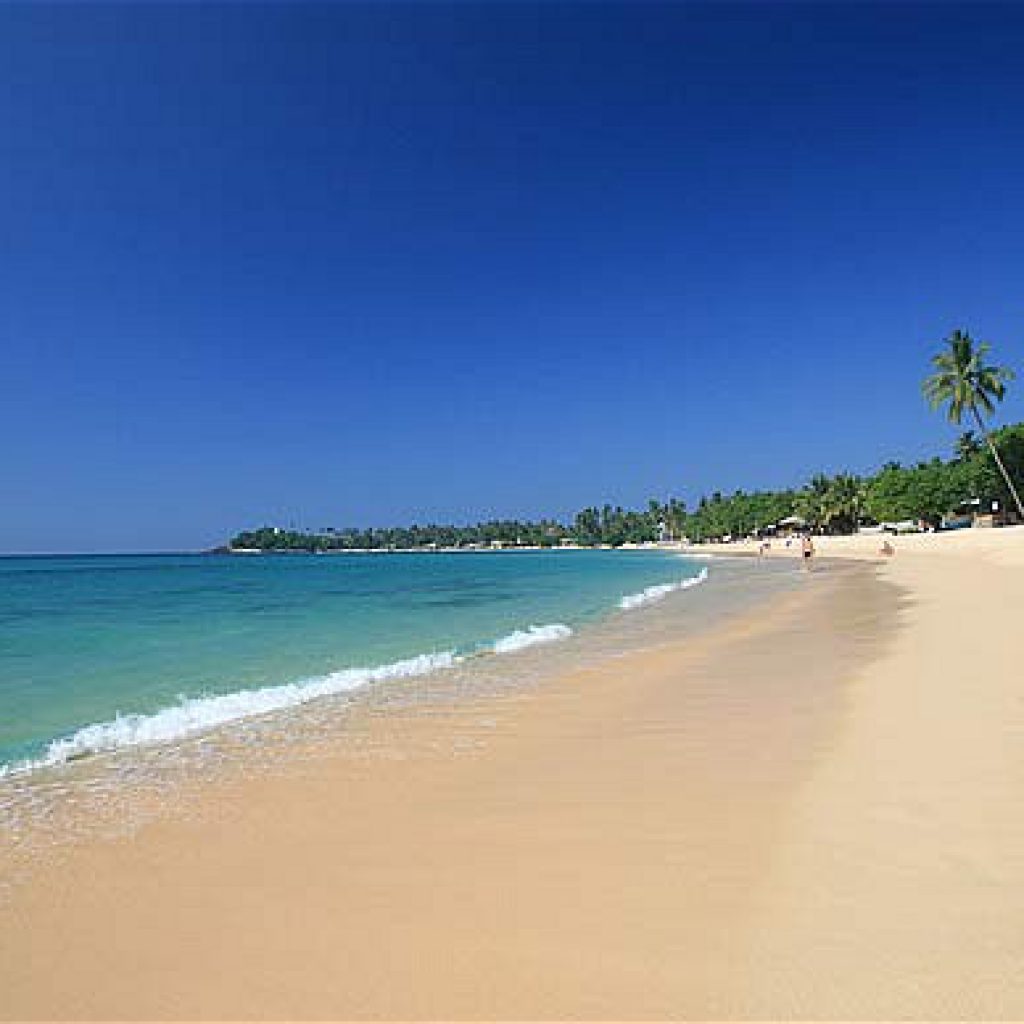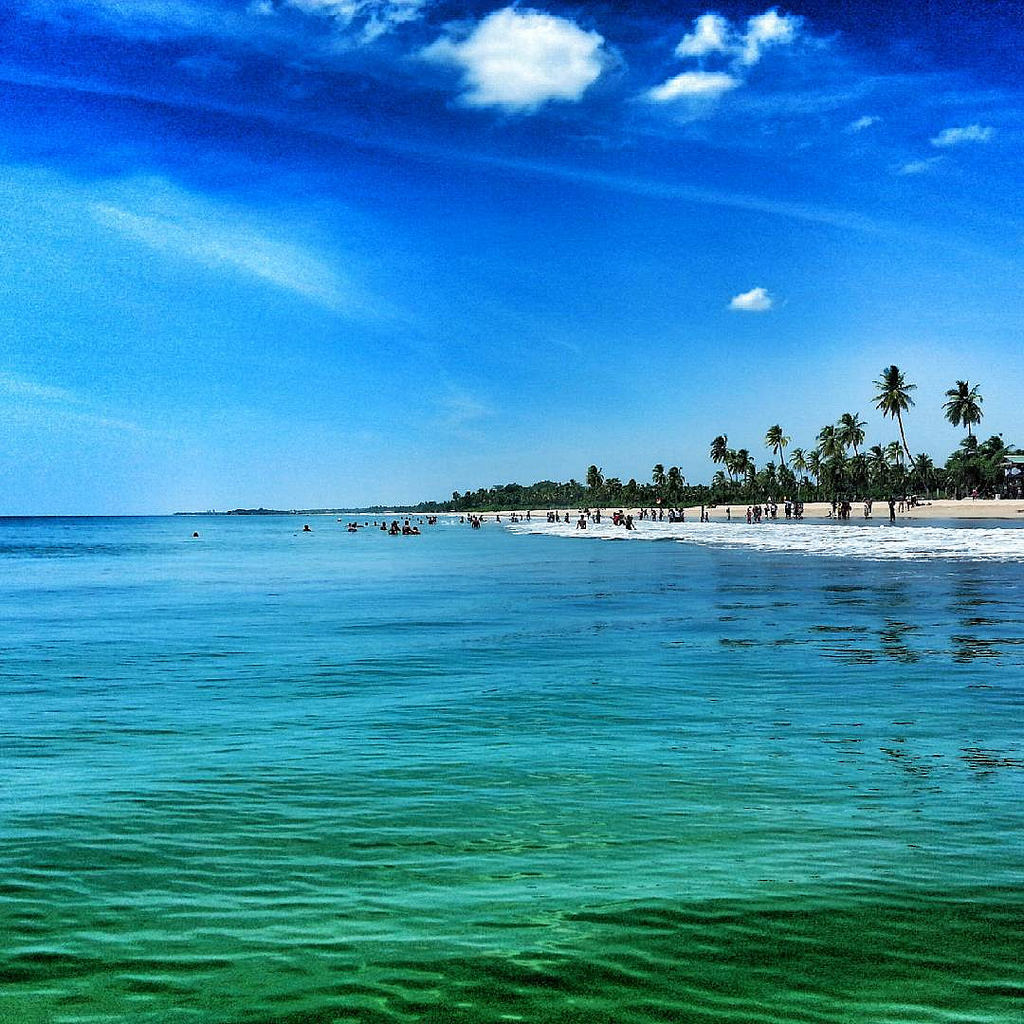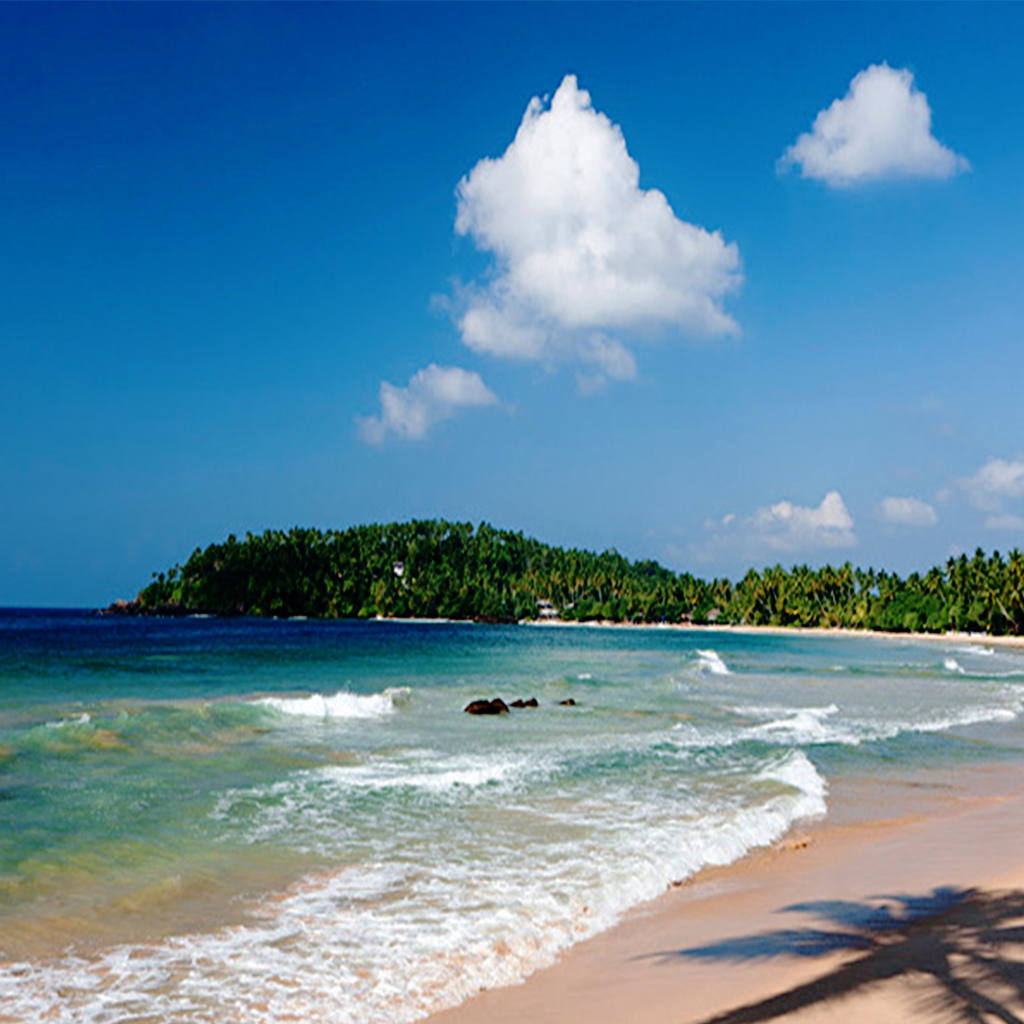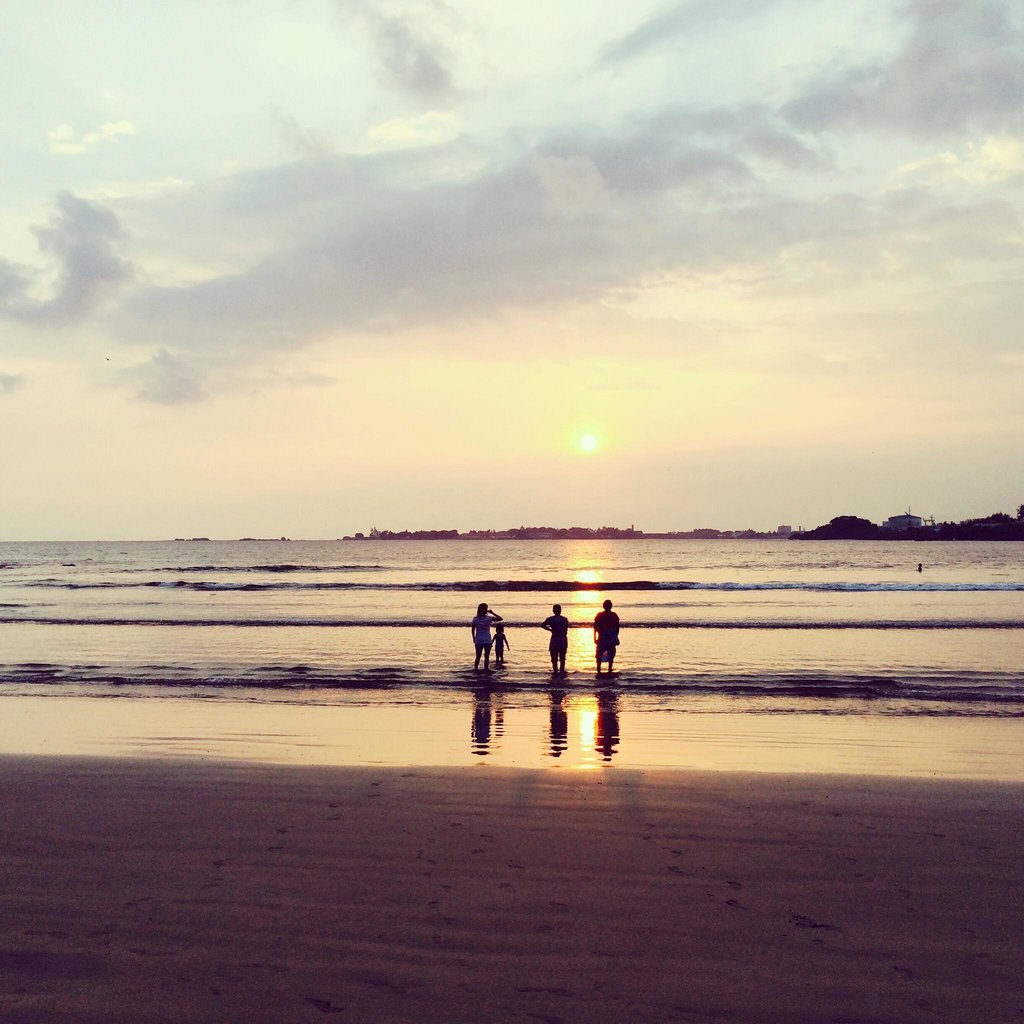Beaches In Sri lanka
Warm, tropical Sri Lanka is an island with over a thousand with over a thousand miles of beautiful, pale gold beaches, fringed with coconut palms and surrounded by blue water. There are lovely bays, coral reefs inhabited by colorful fish and the sun shines its blessing over all.
High season for the beaches of the south and west (with our capital city, Colombo, between them) is November to April, the northern winter when we have beautiful weather and perfect conditions for water sports.Close to Air port and north of Colombo are the lovely beaches of hendala,Negombo and Waikkal.South of Colombo is our famous ”gold coast” with many fine resorts which stretch from Mt.Lavinia(a suburb of Colombo) along Wadduwa, Kalutara,Beruwala,Bentota, (where river and sea meet and mingle),Induruwa,Kosgoda,Hikkaduwa,Galle,Unawatuna,Koggala,
Weligama,Dickewell Tangalle and Hambantota in the South.
Here too Sri Lanka has fine beaches, typically wide stretches of sand what seems like miles of clear, shallow water; pretty bays and covers. Or ,if you are game enough for the adventurous while merely basking in the sun breathing in the fresh cool air of the ocean will undoubtedly satisfy the slightly lethargic.Long sunshine-filled season from February to mid-October. The best Beaches are those of Nilaveli,Kuchchaveli,Trincomale town, Arugam Bay. The tourist season in Arugam Bay in the Southeast coast starts in March with the favorable windy atmosphere for surfing. Arugam Bay is one of the best surfing areas in Asia
(Sea turtle sanctuary)
Unawatuna is rich in its biodiversity. Unfortunately, its greatest potential attraction for eco-tourism was the marsh land or mangrove called Kadolana which was partially destroyed, dredged and filled up to build a chain hotel which never got off the ground. Many locals believe it to have been cursed for being built at the doorstep of the Wella Devalaya.
Over sixty species of endemic birds, including Terns, Egrets, Herons, Sandpipers, Kingfishers, as well as rarer species such as the Lesser Whistling Duck, the Asian Palm Swift, the White Breasted Waterhen, the Turnstone Loten’s Sunbird, and the Black Bittern have been sighted in the locality by the ornithologist, Clive Byers. These birds are mostly sighted in the remaining marshy area and Rumassala Hillock.
Off the coast of Unawatuna, beneath the Indian Ocean lies a number of coral reefs, shipwrecks, and a great variety of fish and turtles. The turtles still wade onto the shore to lay their nests and eggs, and at times, as if to lay first claim to the sandy shore now invaded by the tourists and dotted by restaurateurs, even go right into the beach front restaurants .
The Rumassala coral reefs at the east end of the Galle Harbor attract divers, but are now endangered due to possible port development. Eco treks in the shrub jungles of Rumassala are also available.
(Corel Gardens)
The marvelous beach of Hikkaduwa has a smoothing gentle wind and the sounds of nature surrounded by a gorgeous natural reef filled with varieties of sea life gives you the feeling of a relaxing massage, mostly famous for long resting vacations and more as a honey moon destination filled with adventuress sports and events.
Pasikudah beach is located at the south-eastern edge of the bay. It has a sandy bottom at around 8 meters, having soft and hard coral growth and home to fish such as damselfish, cardinalfish, butterflyfish and a handful of snappers and sweetlips. Some of the other species found on the reef are sand perches, shrimp gobies, shells and some other fish too. It is said that this place is best for night diving.
Serving the Island as one of the major attractions for tourists, Pasikuda is identified as one of the safest beaches on the Island by many tourists. Pasikuda is located in the Eastern province of Sri Lanka. This popular tourist destination of Pasikuda is just 35 km away from the main city of Batticaloa
